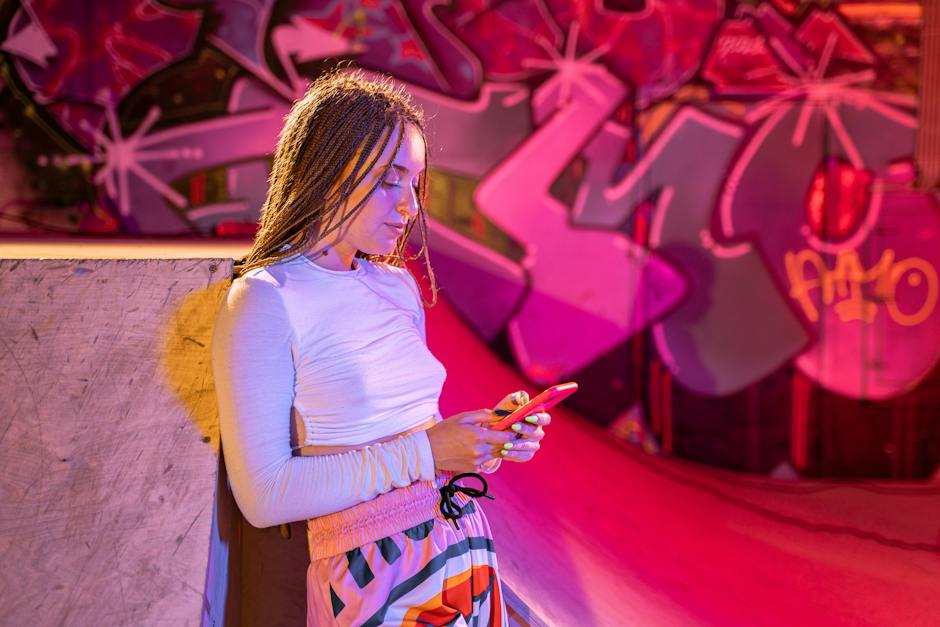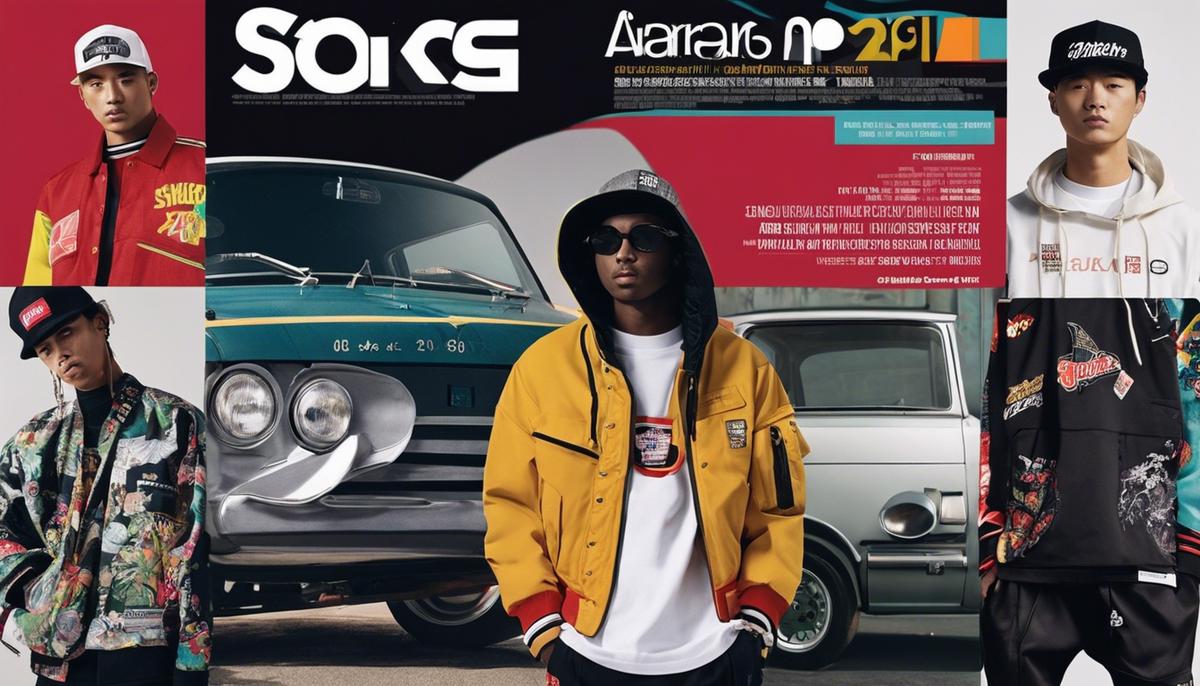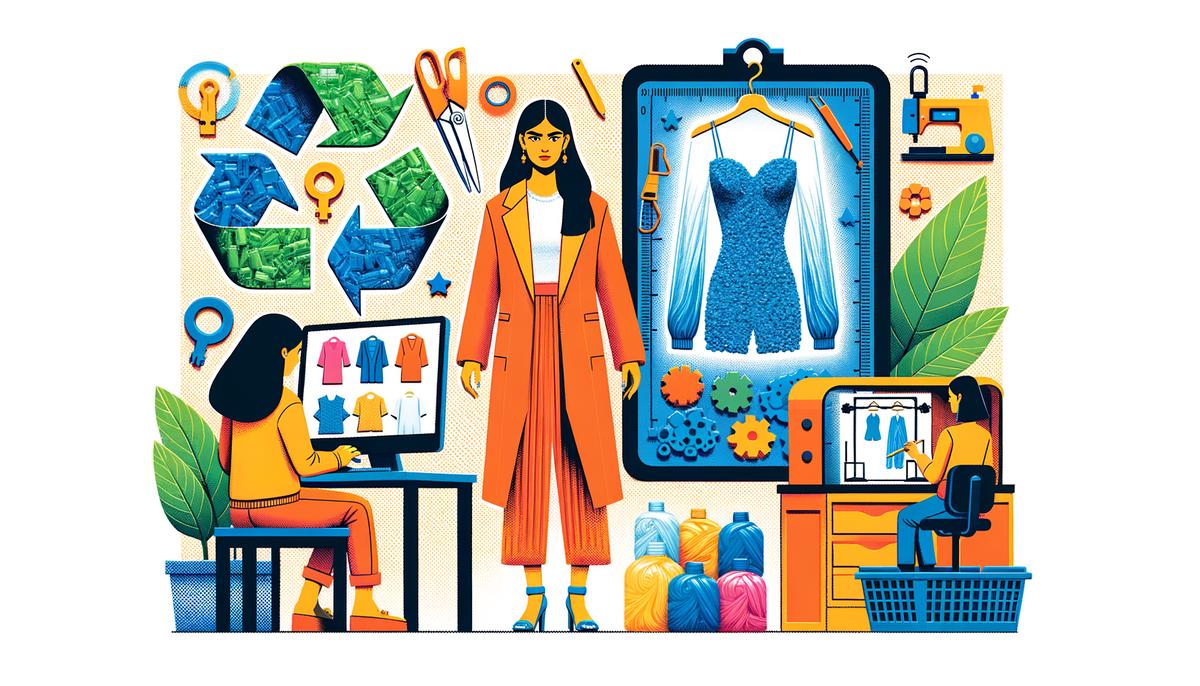Streetwear—a term that was once relegated to the outskirts of fashion, synonymous with the defiant threads of urban subcultures—now commands a significant presence in the vast echelons of the global fashion industry. Its emergence from the sun-soaked skate parks of California, the bustling city blocks where hip-hop thrived, to the avant-garde streets of Tokyo, narrates a story of cultural convergence and sartorial innovation. Establishing itself as the voice and armor of youth rebellion, streetwear challenged the status quo, leading it to capture the gaze of luxury fashion’s elite. Through the intricate tapestry of its origins and a collective of pioneering brands, this unique fashion movement has transcended its humble beginnings, inviting us to explore its ascent from obscurity to ubiquity—a testament to its power in shaping modern apparel.
The Origins and Catalysts of Streetwear
From Underground to Mainstream: The Streetwear Ascension
In a world where high fashion often rules the sartorial roost, it’s the meteoric rise of streetwear that’s flipping the script on what’s considered en vogue. What was once the uniform of skaters and hip-hop aficionados has vaulted to the forefront of fashion, rubbing elbows with couture and reshaping the retail landscape as we know it. But what exactly sparked this shift from subculture to prominence?
The allure of streetwear lies in its authenticity. It’s the offspring of grassroots movements, born on the streets and raised by communities of individuals who value self-expression and practicality. Without a doubt, it’s this authenticity that struck a chord with the wider public. Streetwear’s narrative is steeped in real stories, real people, and real urban experiences, a far cry from the often-unreachable narratives spun by traditional luxury brands.
Another key catalyst in streetwear’s ascent is the collaboration economy. As streetwear brands started to forge partnerships with high-end fashion houses, they bridged the gap between niche and mainstream. These collaborations became the golden ticket to securing a coveted piece that meshed the street’s edge with luxury’s elegance. The products of such unions? Instant sell-outs, long lines, and a frenzied buzz that only further cemented streetwear’s position in the limelight.
The digital revolution, too, played its part. Social media turned streetwear into a global conversation. With influencers and celebrities donning the likes of Supreme, Off-White, and BAPE, their followers wanted in. Instagram and other platforms became runways for everyday fashion enthusiasts to flaunt their latest drops, transforming streetwear into a viral phenomenon.
Let’s not forget the economics. In an era where exclusivity sells, streetwear took scarcity marketing and ran with it. Limited releases and hyped drops created a fervent resale market, with enthusiasts willing to pay multiples over retail to get their hands on rare pieces. It was market supply and demand drama at its finest.
Lastly, adaptability has been streetwear’s ace in the hole. Unlike more rigid fashion genres, streetwear has shown an incredible capacity to evolve with the times, embracing new trends, technologies, and attitudes with an ease envied by many traditional retailers. It’s this chameleon-like nature that has allowed streetwear to not just survive but thrive.
So there you have it. Streetwear’s reputation skyrocketed through a powerful mix of authenticity, strategic collaborations, digital traction, smart marketing tactics, and an enviable agility. This fashion genre broke the mold, proving that even the most unassuming beginnings can lead to global dominance when paired with mindful innovation. The question now becomes, what’s next for streetwear? If its rocket-like journey tells us anything, it’s that whatever the future holds, streetwear will likely be at the forefront, sartorially speaking.

The Business of Streetwear
Streetwear: A Paradigm Shift in Fashion’s Business Model
If you’ve noticed the crowds lining up for the latest sneaker drop or the buzz generated from a limited-edition hoodie, you’re witnessing the powerful market dynamics of streetwear. This isn’t just a style—it’s a revolution in the fashion business model, showcasing an expertise in consumer behavior and market strategy that traditional fashion hadn’t quite grasped.
Breaking the Molds of Seasons and Collections
Where the high fashion industry thrives on seasonal collections and runway shows, streetwear flips the script. It responds to the cultural zeitgeist with immediate releases—think capsule collections that hit the market at lightning speed. This agility enables brands to maintain a constant connection with their audience, feeding into the consumer’s desire for the latest threads without the wait.
Community and Culture at the Forefront
Streetwear doesn’t just sell apparel; it sells a lifestyle. Brands cultivate uniqueness not solely through clothing but by embedding themselves into the fabric of culture. Music, art, sports—they’re all intertwined, building a close-knit community that transcends the garments. This community isn’t just a customer base; it’s a collaborative network, shaping and propelling the brand forward.
Exclusive Drops and Access
The typical drop model—releasing limited quantities at unpredictable times—is streetwear’s ace card. It moves away from mass production and over-saturation towards creating an experience of exclusivity. Shoppers aren’t just buying a product; they’re buying into a moment, a feeling of being one of the select few to own that item. It’s retail theater at its finest, made even more powerful through savvy use of digital platforms for sales and promotion.
Retail Innovation and Experiences
The traditional retail model doesn’t quite cut it for streetwear’s forward-thinking audience. Enter pop-up shops and interactive retail experiences that offer more than just products—they’re an entryway into the brand’s ethos. They offer a physical touchpoint that enriches the digital narrative, solidifying streetwear’s place not just in consumers’ wardrobes but also in their daily lives.
Engagement Beyond the Transaction
Finally, streetwear understands the importance of engagement beyond the point of sale. The relationship between brand and consumer doesn’t end at checkout. Through events, online forums, and even brand involvement in social causes, streetwear keeps the conversation going. This engagement is pivotal, transforming one-time buyers into lifelong brand advocates.
In conclusion, streetwear has set the stage for a new era of fashion business. It’s not just about what’s being sold but how and why. With its finger on the pulse of cultural currency, streetwear has rewritten the rules of retail, leaving an indelible mark on the industry, and causing traditional fashion houses to sit up and pay attention. It’s not just a trend—it’s a business model that has disrupted the norm, and it’s here to stay.

Collaborations and Cross-Pollination
“The Synergy Game: How Collaborative Genius Catapulted Streetwear into the Fashion Stratosphere”
In the ever-evolving world of fashion, few movements have made as seismic an impact as streetwear. Its ascent to the pinnacle of style can be attributed in part to the strategic alliances forged in the marketplace. This piece homes in on the role collaborations have played in propelling streetwear from niche to mainstream, beyond the foundational aspects previously examined.
A critical component has been the cultivation of partnerships with influencers and celebrities from diverse spheres—music, art, sports, and beyond. These high-profile personalities serve as catalysts, fusing their substantial followings with streetwear’s authenticity. When a basketball icon puts their stamp on a sneaker line or a famed artist lends their vision to a capsule collection, the cultural resonance amplifies the brand’s reach.
Furthermore, collaborations have opened doors to innovation by uniting contrasting aesthetics and expertise. When traditional sportswear giants teamed with up-and-coming streetwear labels, a hybrid was born—pieces that delivered on performance, suffused with street-savvy flair. The mingling of these domains fosters an environment ripe for cutting-edge designs and technological advancements, fueling consumer excitement and anticipation.
Emerging as a vital approach, cross-industry collaborations have equipped streetwear with versatility. Here, brands embody the ability to traverse sectors—from sneakerheads to tech enthusiasts to environmental advocates—linking arms with businesses that bring in new audiences, ethos, and sustainability practices. This multifaceted approach guarantees a broader appeal and embeds streetwear into a variety of lifestyles.
The narrative of streetwear has been further rewritten through ventures with not just fashion tycoons or global celebrities, but also with localized, grassroots entities. These alliances celebrate the distinctiveness of local scenes and narratives, endowing collections with a sense of place and story that resonates deeply with communities and aficionados alike.
In the broader perspective, collaborations catalyze a continuous cycle of reinvention for streetwear. Each partnership is a fresh opportunity—a spark for the next trend. Brands keep their fingers on the pulse, always looking for the unconventional pairing or the unexpected twist that will disrupt the market and capture imaginations.
As the streetwear saga unfolds, the power of collaborations remains undeniable. Through strategic alliance lies the art of elevation, springboarding brands from the streets to the echelons of global recognition and acclaim. The impact? A revolutionized fashion industry where the collaborative spirit is not just encouraged but celebrated—a beacon for innovation, inclusion, and unrivaled progress.

The Cultural Impact of Streetwear
Streetwear’s infiltration into other industries is a testament to its boundless influence on our cultural fabric. Its tentacles extend far into realms like the music industry, where artists aren’t just brand ambassadors but integral to a label’s identity, shaping fashion’s lexicon with every album drop. Look at the energy of live concerts, the rhythm, the vibrant swag—it all echoes the streetwear ethos.
Art, too, has felt the unmistakable touch of streetwear. Increasingly, we see streetwear brands venturing into collaborations with contemporary artists, transforming wearables into wearable canvases, democratizing art in an unprecedented fusion of culture and commercial savvy. It’s a move that both elevates the art world’s reach and cements streetwear’s role as a curator of cool.
Turn your gaze to sports, and the synergy is palpable. Athletes drape themselves in streetwear’s latest off the court, concurrently playing muse and marketing powerhouse. The performance-infused aesthetics borrowed from athletic gear embolden streetwear’s design narratives, creating a reciprocal relationship that transcends the mere practicality of clothing.
In technology, streetwear has spurred innovation—notably through “dropping” new products with tech partnerships. Sneakers equipped with integrated smart tech capturing data to inform future design, supporting a lifestyle inherently mobile and hyper-connected, mirrors streetwear’s own DNA: always on the pulse.
Even within the film and entertainment sector, streetwear’s aesthetic shapes character identities and becomes inseparable from the stories they tell. It’s a visual language that communicates the zeitgeist, defining and being defined by the cultural conversations of the moment.
Finally, the corporate world, traditionally rigid and resistant to the siren calls of casual attire, is now sprinkled with boardroom sneakers and designer hoodies. Streetwear has challenged norms about professional appearance, injecting a flair of individualism into the corporate sphere, reshaping company cultures and ‘dress down’ policies.
The streetwear phenomenon has transcended its roots, interlacing with diverse facets of our lives and redefining industries in its wake. It’s a bona fide cultural force, shaping the dialogue between society and commerce, passion and enterprise, community and individualism. As it continues to evolve, one can only anticipate further groundbreaking intersections, maintaining streetwear not as a mere trend, but as a cornerstone of contemporary culture.

The Future Landscape of Streetwear
The Future of Streetwear: Sustainable Moves & Tech Integration
In forecasted streetwear trends, sustainability will take center stage. The younger demographic, driving the streetwear surge, is increasingly environmentally conscious. Brands that fail to align with eco-friendly practices might find themselves falling out of favor. Expect to see streetwear labels invest more in sustainable materials, responsible sourcing, and ethical manufacturing processes to meet this market demand.
Technology integration is another frontier poised to reshape streetwear. As wearable tech becomes more sophisticated, streetwear brands that innovate with integrated technology will lead the pack. Smart fabrics, interactive clothing, and apparel that bridges the gap between fashion, functionality, and tech utility will cater to a market that’s always online and on the move.
The evolution of non-fungible tokens (NFTs) and their role in streetwear is on the horizon as well. Digital streetwear assets that provide exclusivity in the virtual space, such as online gaming or digital fashion platforms, offer a new dimension to the personal expression that streetwear embodies.
A burgeoning trend is the focus on mental health and wellness in brand messaging. Streetwear labels are poised to champion causes and integrate mental health awareness into their branding and product lines. This approach will not only facilitate a deeper connection with consumers but also reinforce social responsibility as a core company value.
Lastly, streetwear will continue to blur the traditional lines of retail by integrating more into day-to-day lifestyle spaces. Coffee shops, art galleries, and co-working spaces may double as retail hubs for streetwear, fostering a more organic shopping experience that complements the consumer’s lifestyle.
In conclusion, as the streetwear landscape advances, the intertwining of sustainable practices, technological innovation, digital exclusivity, social consciousness, and lifestyle integration will drive its trajectory. Witnessing these unfold will be an intriguing development for enthusiasts and industry professionals alike.

The sartorial narrative of streetwear continues to be written with each season, layered with an anticipation of what’s next on the horizon of fashion innovation. As the boundaries of high fashion and urban aesthetics become ever more entwined, streetwear stands at the vanguard, navigating the future with adaptability and an unwavering connection to the pulse of street culture. It is more than just clothing; it is a movement—a cultural compass that will persist in reflecting society’s evolving dynamics, ethics, and attitudes. Brand custodians and style aficionados alike will have to remain nimble, offering up authenticity and sustainability as the cornerstones of streetwear’s enduring legacy. With eyes trained on the horizon, the promise of streetwear lies not in its certainty but in its uncharted potential to redefine the fabric of fashion itself.










